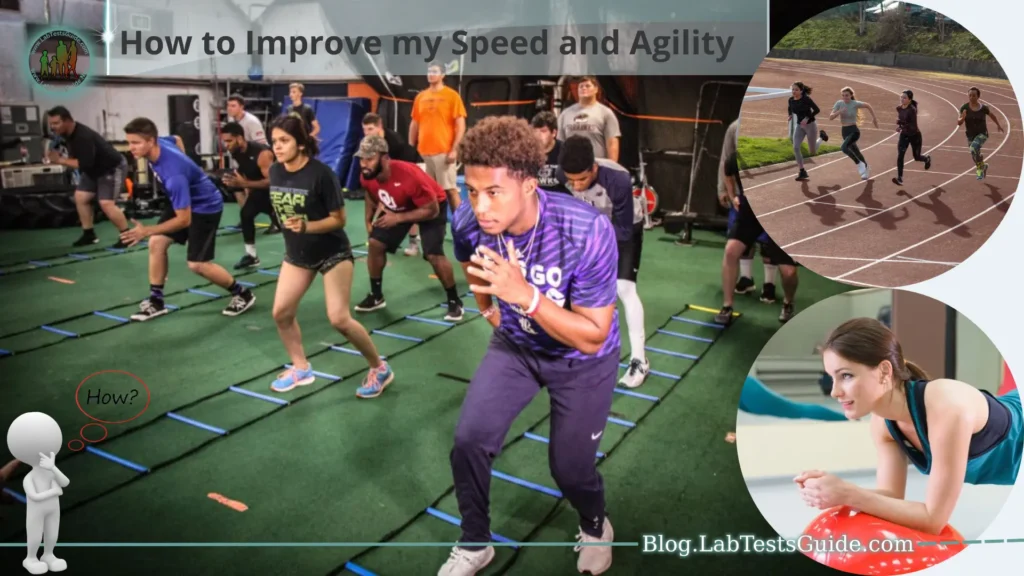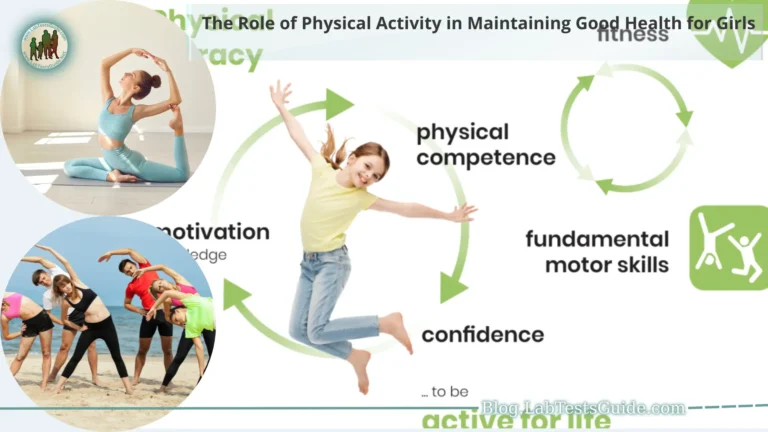Speed and agility are essential attributes for athletes, fitness enthusiasts, and individuals looking to enhance their physical performance. Whether you’re an aspiring athlete seeking to excel in your sport or simply looking to improve your overall fitness level, developing speed and agility can significantly elevate your capabilities. This guide aims to provide you with comprehensive insights and practical strategies to enhance your speed and agility effectively.

In the following chapters, we will explore the key components of speed and agility, including the critical factors that influence them. You will learn how to assess your current level of speed and agility, set clear and achievable goals, and design a tailored training program to suit your individual needs. Furthermore, we will delve into a wide range of specific exercises and techniques that target speed and agility development, along with strength and conditioning methods to support your progress. Moreover, we will highlight the importance of injury prevention, nutrition, and mental preparation to ensure a well-rounded approach to maximizing your speed and agility potential.
What Is Speed?
- Speed is a physical attribute that refers to the ability to move rapidly or cover a distance in the shortest amount of time possible.
- It is a fundamental component of various sports and physical activities, influencing performance in running, sprinting, and other athletic endeavors.
- Speed is often measured in terms of time taken to cover a specific distance, such as meters or yards.
- It is a product of stride length (the distance covered with each step) and stride frequency (the number of steps taken per second).
- Speed can be broken down into different categories, including acceleration (how quickly one can reach top speed) and speed endurance (the ability to maintain high velocity over an extended period).
- While genetics play a role in determining one’s natural speed potential, training and proper technique can significantly enhance an individual’s speed capabilities.
- Speed is vital in sports like track and field, soccer, basketball, football, tennis, and many others, where quick bursts of movement can be the difference between success and failure.
- Developing speed requires a combination of specific exercises, technique drills, and strength training tailored to the demands of the sport or activity.
- Speed training should always be accompanied by injury prevention practices and adequate rest to promote optimal performance and long-term development.
- Improving speed can positively impact overall athletic performance, leading to improved competitiveness, reaction time, and overall physical fitness.
How to Improve Speed and Agility:
- Assess Your Current Level: Start by evaluating your current speed and agility to establish a baseline for improvement. Perform various speed tests, such as timed sprints, and agility drills like shuttle runs and cone drills.
- Understand the Key Components: Familiarize yourself with the factors that contribute to speed and agility, such as proper running technique, acceleration, deceleration, change of direction, reaction time, balance, and coordination.
- Design a Training Program: Set clear and achievable goals based on your assessment and understanding of key components. Create a structured training plan that includes a mix of speed training exercises, agility drills, strength and conditioning workouts, and flexibility training.
- Incorporate Speed Training Exercises: Integrate specific exercises that target speed improvement, such as sprint intervals, plyometric jumps, and resisted sprinting drills using resistance bands or sleds.
- Add Agility Training Drills: Include agility-focused exercises to enhance your ability to change direction quickly, such as ladder drills, cone drills, and lateral movements.
- Strength and Conditioning: Develop strength in key muscle groups through weightlifting, bodyweight exercises, and functional training. Strengthening the core and lower body will enhance speed and agility performance.
- Flexibility and Mobility: Maintain or improve flexibility and joint mobility with regular stretching and dynamic warm-up routines to reduce the risk of injuries and optimize athletic performance.
- Focus on Proper Technique: Pay close attention to your running form and execution of agility movements. Proper technique ensures maximum efficiency and minimizes the risk of injury.
- Injury Prevention: Prioritize injury prevention by incorporating warm-up routines, cooldowns, and adequate rest between training sessions. Listen to your body and address any signs of strain or discomfort promptly.
- Nutrition and Hydration: Fuel your body with a balanced diet that supports your training goals. Stay well-hydrated to optimize your physical performance during workouts and competitions.
- Mental Preparation and Focus: Train your mind as well as your body. Practice visualization techniques to enhance mental preparedness, concentration, and confidence during training and competitions.
- Track Your Progress: Keep a training journal to record your workouts, improvements, and setbacks. Tracking your progress allows you to make necessary adjustments and stay motivated.
Assessing Your Current Level:
Speed Assessment Techniques:
- Sprint Test: Perform timed sprints over specific distances, such as 40 meters or 100 yards, to measure your maximum speed.
- Flying Sprints: Time yourself running at maximum speed over a shorter distance (e.g., 20 meters) after building up speed over a longer distance (e.g., 60 meters).
- Speed Endurance Test: Run several repetitions of a set distance (e.g., 200 meters) with short rest intervals to assess your ability to maintain speed over time.
Agility Assessment Techniques:
- T-Test: Set up cones or markers in the shape of a T and time yourself as you sprint forward, shuffle laterally to touch one cone, shuffle to the other side to touch another cone, and finally sprint backward to the starting point.
- Pro Agility (5-10-5 Drill): Position three cones in a straight line, five yards apart. Start in the middle and sprint five yards to one side, touch the ground, shuffle ten yards to the other side, touch the ground, and then sprint back to the starting position.
- Zig-Zag Test: Set up a series of cones in a zig-zag pattern and time yourself as you weave through them, testing your change of direction and quickness.
Self-Reflection:
- Consider your performance in your sport or activity. Are you often outpaced by opponents or teammates? Do you struggle to change direction quickly?
- Observe your overall physical fitness. Are you frequently fatigued during physical activities that require speed and agility?
- Note any areas of weakness or limitations in your movements, such as difficulty with quick lateral movements or lack of explosive acceleration.
Video Analysis (Optional):
- If possible, record yourself performing speed and agility drills to visually analyze your technique and identify areas for improvement.
- Compare your form to that of experienced athletes or professional players to gain insights into proper mechanics and form.
Seek Professional Assessment (Optional):
- If available, consult a qualified coach, trainer, or sports specialist who can conduct a comprehensive assessment of your speed and agility. They may use advanced measurement tools and expertise to provide valuable feedback and tailored training recommendations.
Understanding the Key Components:
Speed Factors:
- Sprinting Technique: Proper sprinting mechanics, including arm swing, leg drive, and body position, are crucial for maximizing speed.
- Acceleration and Deceleration: The ability to rapidly increase and decrease speed is essential for quick changes of direction and efficient movement.
- Speed Endurance: This refers to the capacity to maintain a high speed over a prolonged period, crucial for endurance sports and longer sprints.
Agility Factors:
- Change of Direction: Agility involves the ability to change direction rapidly while maintaining balance and control, often tested through various agility drills.
- Reaction Time: Quick reflexes and the ability to react promptly to visual or auditory cues are essential for agility performance.
- Balance and Coordination: A strong sense of balance and coordination allows smooth and controlled movements during quick changes of direction.
Integration of Speed and Agility:
- In many sports and physical activities, speed and agility work together synergistically to optimize overall performance.
- Combining quick bursts of speed with agile movements enables athletes to navigate through opponents, evade tackles, and reach a ball faster.
Sport-Specific Demands:
- Different sports require varying degrees of speed and agility. Understanding the specific demands of your sport will help tailor your training accordingly.
- For example, soccer players need agility to dribble past opponents, while sprinters require explosive speed to excel in short-distance races.
Biomechanics and Body Mechanics:
- Understanding the biomechanics of running, sprinting, and changing direction can help identify areas of improvement in technique.
- Proper body mechanics, such as knee drive, foot strike, and hip mobility, contribute to optimal speed and agility performance.
Muscle Strength and Power:
- Strengthening key muscles, especially in the legs and core, plays a vital role in enhancing speed and agility.
- Developing explosive power through plyometric exercises can significantly improve quick movements and acceleration.
Mental Aspects:
- Psychological factors, such as focus, concentration, and decision-making, influence speed and agility performance.
- A confident and focused mindset can lead to better reaction times and quicker decision-making during fast-paced situations.
Injury Prevention:
- Adequate warm-up routines and stretching are essential to reduce the risk of injuries associated with speed and agility training.
- Improving joint stability and flexibility helps prevent strains and sprains during rapid movements.
Designing Your Training Program:
- Goal Setting: Clearly define your specific goals related to improving speed and agility. Whether it’s achieving faster sprint times or enhancing change of direction, setting measurable objectives will guide your training.
- Individualization: Tailor the training program to suit your current fitness level, strengths, weaknesses, and the demands of your sport or activity. Avoid a one-size-fits-all approach and focus on personalized training.
- Periodization: Structure your training program into phases to allow for proper progression and recovery. Common phases include the preparation phase, strength and conditioning phase, speed and agility focus phase, and competition phase.
- Warm-up and Cool-down: Begin each training session with a dynamic warm-up to increase body temperature, activate muscles, and improve mobility. After the workout, perform a cooldown with static stretching to enhance flexibility and promote recovery.
- Speed Training Exercises: Incorporate a variety of speed-focused drills, such as short sprints, flying sprints, and overspeed training (using assistance to run faster than usual). Include interval training to enhance both speed and endurance.
- Agility Training Drills: Integrate agility-focused exercises, such as cone drills, ladder drills, and reactive drills, to improve change of direction, footwork, and reaction time.
- Strength and Power Training: Include resistance training exercises that target key muscle groups, particularly the legs and core, to enhance power and explosiveness during speed and agility movements.
- Plyometrics: Implement plyometric exercises like box jumps, bounding, and depth jumps to develop explosive power, which is vital for quick movements and acceleration.
- Flexibility and Mobility: Regularly perform stretching exercises to maintain or improve joint flexibility and range of motion. This can help prevent injuries and optimize movement mechanics.
- Recovery Strategies: Allocate adequate time for rest and recovery between training sessions to allow the body to adapt and repair. Utilize techniques such as foam rolling, massage, and ice baths to aid recovery.
- Progression: Gradually increase the intensity and complexity of exercises as you improve your speed and agility. Progressive overload is essential for continuous improvement.
Speed Training Exercises:
Acceleration Sprints:
Start from a stationary position and gradually increase your speed over a short distance (e.g., 20 meters). Focus on driving your knees and pumping your arms to build acceleration.
- Flying Sprints: Build up speed over a longer distance (e.g., 40 meters) and then sprint at maximum effort over a shorter distance (e.g., 20 meters) to work on maintaining speed.
- Resisted Sprints: Use resistance bands or sleds to add resistance while sprinting, challenging your muscles to work harder and improve explosive power.
- Hill Sprints: Run uphill for a specified distance to develop leg strength, power, and stride length. Walk or jog back down to recover and repeat.
- Fartlek Training: Incorporate short bursts of sprinting at irregular intervals during a steady-state run or jog. This mimics the unpredictability of game situations and enhances speed endurance.
- Interval Training: Perform high-intensity sprint intervals followed by active recovery periods. For example, sprint for 30 seconds and then walk or jog for 1 minute before repeating.
- Speed Ladder Drills: Use an agility ladder to perform various footwork patterns, such as high knees, lateral shuffles, and quick steps. This improves foot speed and coordination.
- Cone Drills: Set up cones in different configurations, and practice sprinting between them, incorporating changes of direction and quick stops. This enhances agility and reaction time.
- Shuttle Runs: Set two markers a specific distance apart (e.g., 10 meters). Sprint back and forth between the markers, touching each one, focusing on quick acceleration and deceleration.
- Reactive Agility Drills: Have a partner or coach call out directions, and you must react quickly and change direction accordingly. This simulates unpredictable scenarios in sports.
Agility Training Exercises:
- 5-10-5 Drill (Pro Agility Drill): Set up three cones five yards apart in a straight line. Start in the middle cone and sprint five yards to the left cone, touch the ground, then shuffle ten yards to the right cone, touch the ground again, and finally sprint back to the starting cone.
- T-Drill: Position four cones in the shape of a “T” with five yards between each cone. Start at the base of the T and sprint forward to the top cone. Shuffle laterally to the left cone, then back to the right cone, and finally back to the starting cone.
- Zig-Zag Agility Drill: Set up a series of cones in a zig-zag pattern. Sprint forward, weaving in and out of the cones while maintaining control and quick change of direction.
- Box Drill: Create a box with four cones, with five yards between each cone. Move around the box in a clockwise or counterclockwise direction, using quick, precise footwork.
- Lateral Plyometric Jumps: Stand with feet together, then jump laterally over an obstacle or a line, landing softly on the balls of your feet. Repeat back and forth in a controlled, rapid manner.
- Ladder Drills: Utilize an agility ladder to perform various footwork patterns, such as the quick feet drill, in-and-out drill, and lateral shuffle. These drills enhance foot speed and coordination.
- Cone Shuttles: Set up a series of cones in a straight line, approximately one to two yards apart. Sidestep laterally through the cones, touching each one with your hand, and then shuffle back to the starting point.
- Reactive Agility Ball Drops: Have a partner or coach stand behind you, holding a tennis ball. On their signal, turn around and sprint to catch the ball before it bounces twice.
- Lateral Cone Hops: Place a line of cones next to each other with about one to two feet of space between them. Hop laterally over the cones from side to side, maintaining balance and quickness.
- Agility Hurdle Drills: Set up agility hurdles and practice quick step-overs, lateral hops, and forward jumps. This improves your ability to maneuver over obstacles with speed.
- Mirror Drill: Partner up and face each other. One person leads with various agility movements, and the other mirrors their movements, trying to stay as close as possible.
- 3-Cone Drill: Arrange three cones in a straight line with five yards between each cone. Sprint to the first cone, touch the ground, then backpedal to the starting cone. Next, sprint past the starting cone to the third cone and touch the ground before backpedaling back to the starting cone.
- 360-Degree Cone Drill: Set up four cones in a square formation. Start at one cone and sprint around the outside of the square, making a 360-degree turn at each cone. Repeat the pattern in the opposite direction.
Strength and Conditioning for Speed and Agility:
- Squats: Barbell back squats, front squats, or goblet squats help strengthen the quadriceps, hamstrings, glutes, and core, providing a solid foundation for explosive movements.
- Lunges: Forward lunges, reverse lunges, and lateral lunges work on single-leg strength and stability, which is crucial for agile movements.
- Deadlifts: Conventional deadlifts or Romanian deadlifts target the hamstrings, glutes, lower back, and grip strength, enhancing power for sprinting and agility.
- Plyometric Exercises: Plyometrics like box jumps, depth jumps, and lateral bounds develop explosive power, improving your ability to generate force quickly during speed and agility movements.
- Kettlebell Swings: This exercise targets the posterior chain, including the glutes and hamstrings, promoting hip explosiveness and acceleration.
- Medicine Ball Throws: Perform overhead throws, rotational throws, and chest passes to develop upper body strength and power, essential for arm drive during sprinting and quick direction changes.
- Bulgarian Split Squats: This single-leg exercise strengthens the quads, glutes, and hip stabilizers, enhancing balance and stability during agile movements.
- Sled Pushes/Pulls: Pushing or pulling a weighted sled targets the entire body and builds functional strength and power, directly applicable to sprinting and change of direction.
- Calf Raises: Strengthening the calves through calf raises improves ankle stability and contributes to more powerful push-offs during sprinting.
- Glute Bridges and Hip Thrusts: These exercises isolate and activate the glute muscles, which play a significant role in hip extension and acceleration during running.
- Core Exercises: Engage in various core exercises such as planks, Russian twists, and bicycle crunches to improve core stability and rotational power during agility movements.
Injury Prevention Strategies:
- Warm-Up: Always start your training sessions with a dynamic warm-up to increase blood flow to your muscles and prepare your body for physical activity. Warm-ups may include light jogging, leg swings, arm circles, and bodyweight exercises.
- Cool-Down: After your workout, perform a cooldown with static stretching to improve flexibility and reduce muscle stiffness. This helps prevent muscle imbalances and potential injuries.
- Stretching and Flexibility: Incorporate regular stretching into your routine to improve flexibility and maintain joint mobility. Focus on major muscle groups used during speed and agility training.
- Foam Rolling: Use a foam roller to perform self-myofascial release, targeting tight muscles and trigger points. Foam rolling helps alleviate muscle tension and enhances recovery.
- Proper Technique: Focus on using correct form and technique during speed and agility exercises to reduce the risk of strain or injury. Seek guidance from a coach or trainer if needed.
- Gradual Progression: Avoid rapid increases in training intensity or volume. Gradually progress your workouts to allow your body to adapt and minimize the risk of overuse injuries.
- Rest and Recovery: Schedule regular rest days between intense training sessions to give your body time to recover and repair. Adequate sleep is also crucial for recovery and injury prevention.
- Cross-Training: Engage in a variety of physical activities and sports to avoid overuse injuries. Cross-training allows you to work different muscle groups and reduce the strain on specific areas.
- Proper Footwear: Wear appropriate shoes for your chosen activity. Good-quality athletic shoes with proper support and cushioning can reduce the impact on your joints and prevent injuries.
- Listen to Your Body: Pay attention to any signs of discomfort, pain, or fatigue. If you feel an injury coming on, take a break from intense training and seek professional advice if necessary.
- Strength and Conditioning: Building strength and flexibility through targeted strength and conditioning exercises can help stabilize joints and reduce the risk of injuries.
- Hydration: Stay properly hydrated before, during, and after training sessions to support optimal muscle function and prevent cramps or muscle strains.
FAQs:
Why is speed and agility important in sports and fitness?
Speed and agility are crucial attributes in many sports and physical activities. They allow athletes to quickly change direction, react to opponents, and reach their maximum performance potential.
Can I improve my speed and agility even if I’m not an athlete?
Yes! Speed and agility training is beneficial for anyone looking to enhance their overall fitness level and physical capabilities, regardless of their athletic background.
How often should I train to improve my speed and agility?
The frequency of training depends on individual fitness levels and goals. Generally, 2-3 sessions per week with adequate rest between workouts are recommended.
Are there specific age limitations for speed and agility training?
Speed and agility training can be adapted for individuals of all ages. However, it’s essential to consider individual abilities and consult with a healthcare professional if there are any concerns.
Can I do speed and agility training at home, or do I need specialized equipment?
Speed and agility training can be done in various settings, including at home or in a local park. While some drills may require minimal equipment like cones or agility ladders, many exercises can be performed with just your body weight.
How long does it take to see improvements in speed and agility?
Improvement rates vary depending on an individual’s starting level, training consistency, and effort. Generally, noticeable progress can be seen within a few weeks to a few months with regular training.
Are there any injury risks associated with speed and agility training?
Like any physical activity, there is a potential for injury if proper form and technique are not followed. Engaging in a well-structured and progressive training program, along with proper warm-up and cooldown routines, can significantly reduce the risk of injuries.
Can speed and agility training help with weight loss?
Yes, speed and agility training can be a valuable component of a weight loss or fitness program. The high-intensity nature of many exercises can aid in burning calories and improving overall cardiovascular fitness.
Will speed and agility training make me a faster runner?
Yes, incorporating speed and agility exercises into your training can help improve your running speed and performance. Techniques like sprinting drills and interval training are particularly effective for increasing running speed.
Is speed and agility training suitable for children and teenagers?
Speed and agility training can be beneficial for young individuals when appropriately designed and supervised. It should focus on age-appropriate exercises and prioritize safety to ensure healthy development.
Conclusion:
In conclusion, improving speed and agility is a multifaceted journey that requires dedication, consistent effort, and a well-structured training program. By understanding the key components of speed and agility, performing regular assessments, and incorporating a diverse range of speed and agility exercises, individuals can enhance their athletic performance and overall fitness level. Additionally, injury prevention strategies, proper warm-up and cooldown routines, and attention to technique play pivotal roles in ensuring safe and effective training. Whether you’re an athlete aiming to excel in your sport or someone seeking to elevate their physical capabilities, the pursuit of improved speed and agility is a rewarding endeavor that yields significant benefits on and off the field. Stay motivated, stay focused, and enjoy the progress as you become faster, more agile, and better equipped to tackle any physical challenge that comes your way.






